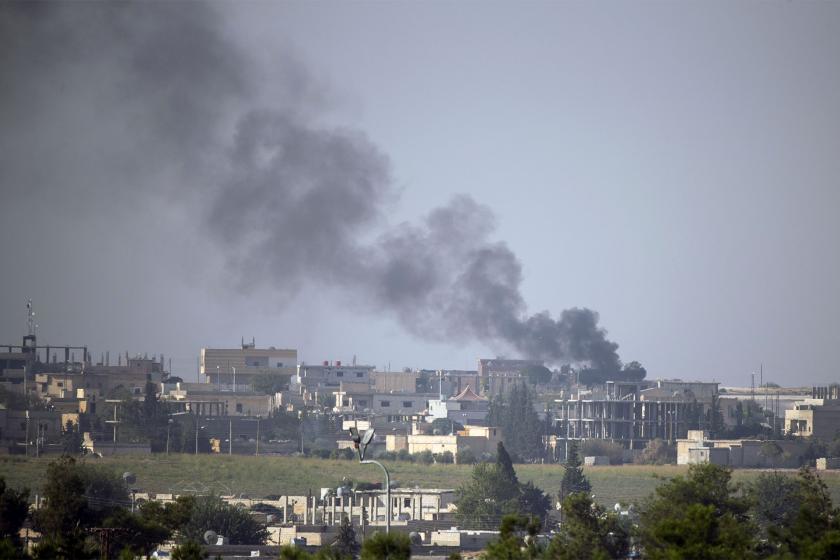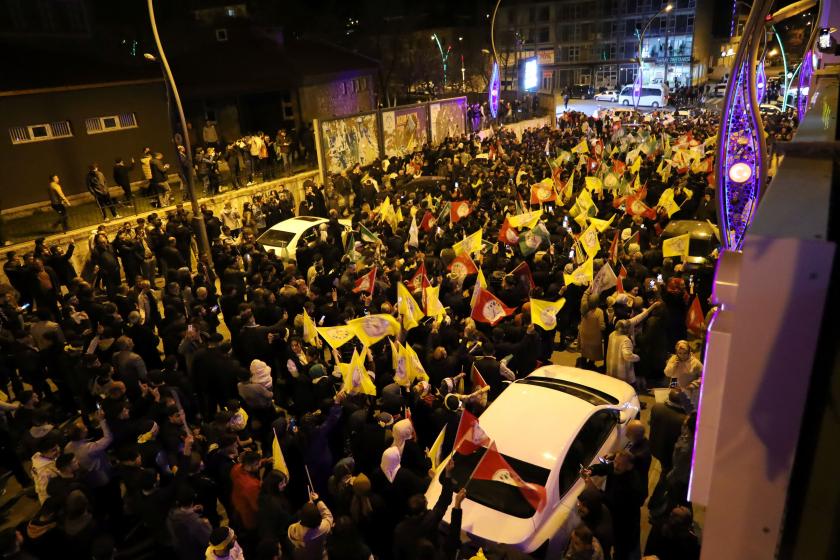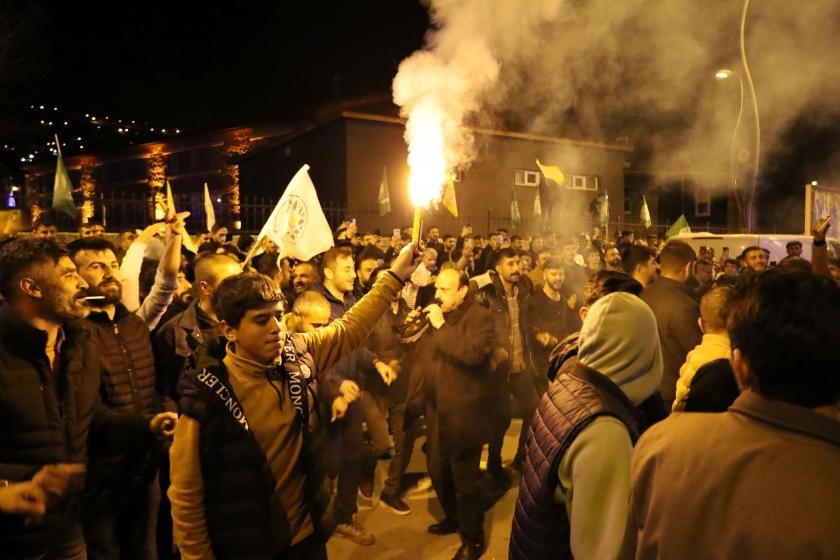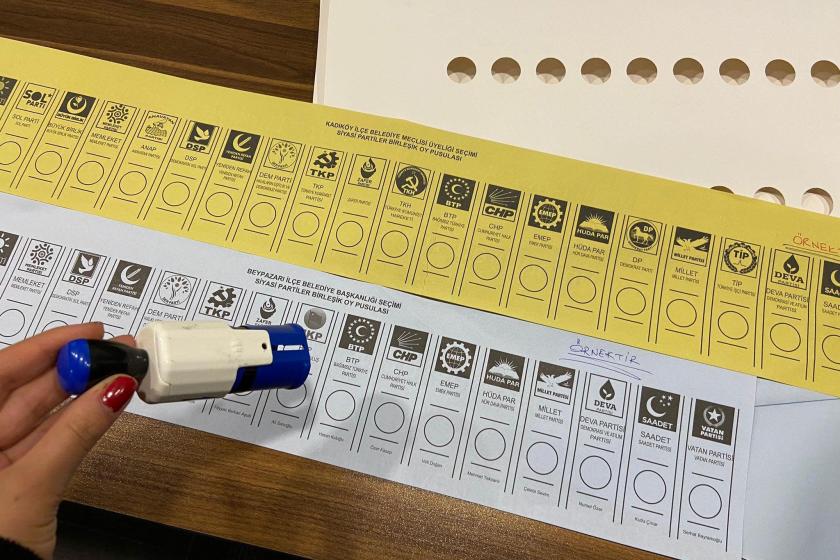15 October 2019 12:30
The question that comes to mind here is what the potential consequences might be of the agreement between the Syrian government and the SDF/Kurdish autonomous government for the “Fountain of Peace” operation and the balances in the region?
 Yusuf Karadaş
Yusuf Karadaş

Photograph: AA
Devoid of compunctions about boarding the ruling party’s chariot of war, the “Fountain of Peace” operation was lauded by the opposition parties, too, as a move casting Turkey in the mould of playmaking force. However, fresh developments to emerge with one week yet to pass since the operation show that the Erdoğan administration is not the playmaker but, on the contrary, a force that makes/is able to make moves in the region (Middle East) to the extent that the playmakers (imperialists) allow him.
The self-same people who launched the “Fountain of Peace” operation with the Conquest Sura also mounted the Ottoman steed with dreams of reconquering the territory their forefathers once ruled while priming themselves to spearhead the intervention in Syria in 2011. The entry into Damascus was six months away and Friday prayers would be performed in the Umayyad Mosque; Kirkuk would be made into the 82nd province and Mosul the 83rd. All that remains today of these politics of conquest is a “national army” several thousand strong put together from among pillaging-looting jihadist gangs and a few little “pockets” secured in Syria from exploiting inter-imperialist contradictions. However, the “Fountain of Peace” operation undertaken to eliminate the Kurdish autonomous government east of the Euphrates that it perceives to be a threat due to its own Kurdish problem and to become a force having a say/stake in Syria’s future where it will settle two million refugees in the mooted “safe zone” looks likely to produce results that place these goals on their head and set developments in train that will also bring Turkey’s presence into question in areas it has previously captured.
It was pointed out in the piece titled “Euphrates Operation: Goals and Realities” penned prior to the start of the operation that it would not be mistaken to conclude from the comments emanating from Russia in support of Turkey’s intervention that the goals Turkey wished to attain through this operation were/would be supported. Russia viewed Turkey’s intervention/operation as a useful means in Syria for causing difficulty to the US military presence and for forcing the Kurds to reach agreement with the Syrian government. However, it was nevertheless inconceivable that either Russia, or the Syrian government or Iran would remain passive observers to a move whereby Turkey would attain permanence in the region and moreover, by settling two million refugees, would create a new area of sovereignty for itself and impose a political solution.
And this has come to pass. The Syrian Government, which had previously castigated the Syrian Democratic Forces (SDF) as “separatist terrorists” on account of their cooperation with the US, responded negatively to calls for talks with the SDF in the immediate aftermath of the operation. However, following the entry by Turkey and the Turkish-backed SNO (the “Syrian National Army” cobbled together from the FSA) into Ras al-Ain and Tal Abyad and US Defence Secretary Esper’s comment that they were pulling out entirely from the north of Suria and the Kurds could reach agreement with Damascus, the SDF, conducting negotiations through the mediation of Russia, and the Syrian government reached agreement on installing military forces in the border regions. Following this agreement that was confirmed by Syria’s official news agency SANA and the autonomous government east of the Euphrates, news started to come in of Syrian military forces having entered points of strategic importance such as Tabqa, Tal Tamer and Ain Issa.
The question that comes to mind here is what the potential consequences might be of the agreement between the Syrian government and the SDF/Kurdish autonomous government for the “Fountain of Peace” operation and the balances in the region?
The installing of Syrian military forces in border regions under this agreement brings with it the risk of conflict with Syria ensuing from attempts to spread Turkey’s rulers’ operation into areas outside Tal Abyad and Ras al-Ain. Presidential spokesman Yasin Aktay said in an assessment he gave Sputnik Arabic with reference to this development, “If the Assad regime tries to enter north-east Syria, Turkey will resist. Conflict between the two armies may ensue.” However, risking conflict with Syria means at the same time coming into confrontation with Russia and Iran, and it must be borne in mind here that the agreement between the Syrian government and the SDF was made under Russia’s guarantee.
There was another goal lying behind Russia’s comments supportive of this operation, apart from the withdrawal of US forces and forcing the Kurds to compromise with the regime. It was to get the rulers in Turkey to address the Syrian government! If the Erdoğan administration insists on conflict as an option, rather than addressing the Syrian government that will install itself into the border regions, the Astana process that it set up with Russia and Iran will also run into difficulty, because Russia and Iran, which point to the “Adana Agreement” at every opportunity, will resist Turkey’s endeavours to intervene under conditions in which the Syrian army has installed/will install itself in the border regions. Under such circumstances, the presence of Turkey, which was able to conduct the Euphrates Shield and Afrin operations with Russia’s “approval,” will also be called into question in these regions. Moreover, all obstacles to the Idlib operation by these forces, which take Turkey’s sensitivities into account with its observation points in Idlib, will have been removed and the jihadist groups that the rulers in Turkey have until now used as a trump card will come to plague it.
So, what is the meaning of the withdrawal of its military by the US, which had previously been striving for a “solution” that would tie Turkey and the Syrian Kurds into its own regional strategy, and the compromise with the regime it is suggesting to the Kurds?
It is highly probable that the US, unable to talk the rulers in Turkey into its own “solution,” is calculating on making it more dependent by withdrawing its military and bringing Turkey into confrontation with the Syrian regime and its partners at Astana. It is redolent of the moves Russia has made until now to bring Turkey into confrontation with its NATO partner the US. Otherwise, it would call for total ignorance of imperialism’s economic politics to think that with this move the US has abandoned its designs in the region
In conclusion, developments on the ground are heading towards a process in which this operation that the rulers in Turkey launched cheerfully to the accompaniment of military marches will expose the country to serious risks and end in tears. The way to eliminate these risks involves a democratization that includes the solving of the Kurdish problem domestically and pacific policies abroad that bring this operation to an end and reject interventions. However, unfortunately, despite these serious risks there is not the slightest indication that the rulers will abandon this error, seeing this operation as necessary, not in the country’s interests, but to halt their own loss of power.



